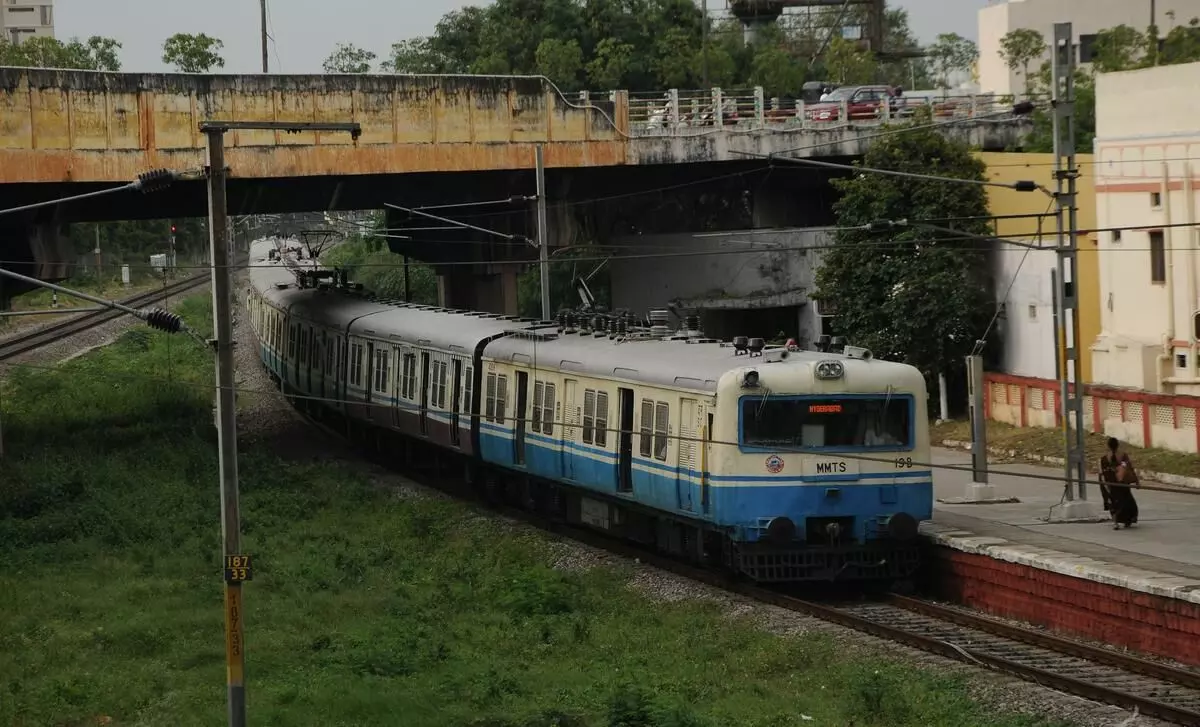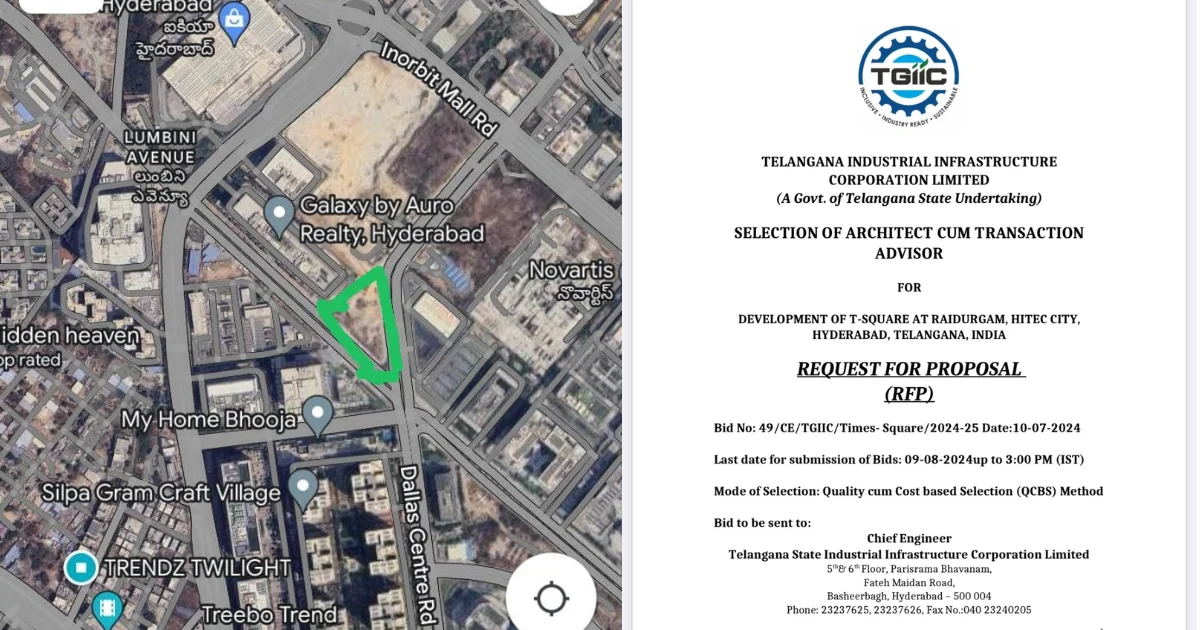Discover the complete story of the Hyderabad to Yadadri MMTS project. Explore route maps, timelines, budget, and how this initiative will transform connectivity in Telangana.
Hyderabad to Yadadri MMTS Project 2025 – Full Details, Route, Timeline
The city of Hyderabad, once considered a sprawling historical hub, is now swiftly evolving into one of India’s most dynamic urban ecosystems. Amid growing urban sprawl, congested roads, and rising travel demand to religious sites, the Telangana government and Indian Railways have laid the blueprint for one of the most ambitious regional transit expansions: the Hyderabad to Yadadri MMTS (Multi-Modal Transport System).
This transformative rail project aims to integrate the city with the prominent pilgrimage destination of Yadadri (Yadagirigutta), enhancing connectivity, easing travel pressure on roadways, and promoting regional development. The MMTS extension isn’t just about logistics—it is about bridging faith, progress, and accessibility in one stroke.
In this in-depth report, we trace the origins, timeline, socio-economic implications, and current status of the Hyderabad–Yadadri MMTS project, based on ground updates, official sources, and expert commentary.
The Rise of Yadadri as a Modern Pilgrimage Hub
Located approximately 60 km northeast of Hyderabad, Yadadri (also called Yadagirigutta) is home to the ancient Sri Lakshmi Narasimha Swamy Temple, attracting lakhs of devotees annually. Following its Rs 1,800 crore redevelopment initiative led by the Telangana state government, Yadadri has been projected as a spiritual and tourism magnet on par with Tirumala.
With grand roads, queue complexes, Kalyanakatta centers, a Brahmotsavam-ready temple infrastructure, and hospitality investments blooming around the temple, the rush of pilgrims to Yadadri has grown exponentially in the last five years.
However, road transport, including TSRTC buses and private vehicles, has been the primary mode of travel—leading to congestion, delays, and logistical difficulties during festivals and weekends.
That’s where the MMTS comes in.
What is the MMTS and Why is it Important?
The Multi-Modal Transport System (MMTS) is Hyderabad’s suburban rail network, launched in 2003 as a joint venture between the South Central Railway (SCR) and Telangana state government. Designed to serve the city’s rapidly growing urban sprawl, MMTS connects major stations such as Secunderabad, Lingampally, Falaknuma, and Nampally.
With Phase 1 successfully implemented and Phase 2 partially operational (delayed due to fund constraints), Phase 3—linking MMTS with Yadadri—is a quantum leap in scale and ambition.
It represents not just an infrastructural upgrade but an effort to:
- Reduce dependency on road transport
- Promote sustainable, green travel
- Encourage seamless city-to-devotee movement
- Develop satellite townships along the corridor
Hyderabad to Yadadri MMTS Route: Proposed Stations & Details
The MMTS extension from Hyderabad to Yadadri will mostly align with the existing Secunderabad–Bhongir–Raigir–Yadadri railway corridor, with enhancements including:
Proposed Route Overview
| Segment | Key Stations |
|---|---|
| Secunderabad to Ghatkesar | Secunderabad Jn, Malkajgiri, Cherlapalli, Ghatkesar |
| Ghatkesar to Bhongir | Ghatkesar, Bibinagar, Pagidipalli, Bhongir |
| Bhongir to Yadadri | Bhongir, Raigir, Yadadri (New Station proposed) |
This alignment ensures that passengers from key urban clusters in Hyderabad can directly access the temple town with limited transfers or traffic interruptions.
Distance Covered: Approx. 60–65 km
Travel Time (Expected): 1 hour (vs. 2.5 hours by road on festival days)
Project Timeline & Budget Allocation
Key Milestones
- 2016–2018: Initial proposal raised by the Telangana Government under MMTS Phase 3
- 2019: South Central Railway approves feasibility study
- 2020: Land surveys and stakeholder consultations begin
- 2021: COVID-19 delays progress
- 2022–2023: Budget discussions revived post Yadadri temple inauguration
- 2024: MMTS Phase 2 partially launched; Phase 3 included in priority projects
- 2025: Targeted commencement of civil works
Budget Snapshot
- Estimated Cost: ₹850–₹1000 crore
- Funding Pattern:
- 1/3 by Telangana Government
- 2/3 by Indian Railways
- Additional CSR contributions expected from temple and tourism bodies
Technological & Operational Aspects
Electrification & Modern Signaling
The proposed MMTS extension will be fully electrified, allowing for energy-efficient EMUs (Electric Multiple Units) to run on schedule. The SCR plans to implement automatic signaling systems, minimizing train intervals and improving safety.
Smart Ticketing
The project integrates mobile ticketing apps, smart card support, and QR-code-based entry compatible with TSRTC and Hyderabad Metro Rail systems. The long-term goal is one ticket, multi-transit system for the Greater Hyderabad region.
Economic & Social Impact
1. Boost to Religious Tourism
With over 2 crore visitors annually, Yadadri’s footfall continues to rise. The MMTS will provide a predictable, comfortable, and low-cost option for devotees, including elderly and rural pilgrims, who currently struggle with road travel limitations.
2. Real Estate & Satellite Township Growth
Areas like Bibinagar, Bhongir, and Raigir are poised for a real estate boom. Several developers have already launched gated communities, resorts, and wellness retreats—riding on the expected train connectivity.
3. Decongesting Roads
NH-163 and NH-202, currently overloaded during peak seasons, will see reduced traffic stress. This will improve road safety and reduce carbon emissions from private vehicles.
4. Livelihood & Local Economy
The project promises to create jobs in:
- Railway operations
- Security and station maintenance
- Last-mile services (e-rickshaws, taxis, shops)
- Hospitality and tourism around Yadadri
Challenges & Bottlenecks
While the vision is ambitious, the Hyderabad to Yadadri MMTS faces real-world hurdles:
1. Land Acquisition Delays
Some land along the Bhongir-Raigir section involves encroachments and legal disputes. Eviction and compensation remain politically sensitive.
2. Cost-Sharing Disputes
There has been back-and-forth between the Railways and Telangana Government over financial contribution shares, delaying tender processes.
3. Integration with Metro & TSRTC
For MMTS to be truly “multi-modal,” seamless integration with other modes is critical. This includes physical infrastructure (e.g., interchange stations) and unified ticketing.
Voices from the Ground
Devotees’ Perspective
Smt. Rajalakshmi, a 62-year-old devotee from Miyapur, says:
“During Brahmotsavam, it takes over 3 hours by car to reach Yadadri. If a clean, fast train starts, it will be a blessing for senior citizens like me.”
Railway Officials
An SCR spokesperson confirmed:
“We are aligning this project with the larger vision of green, accessible pilgrimage tourism. Electrified MMTS trains will make Yadadri as easy to reach as any city suburb.”
Political Angle
The Hyderabad–Yadadri MMTS project has become a political talking point ahead of state elections. Chief Minister Revanth Reddy has recently revived interest, stating:
“Just as we built the new Yadadri temple, we will ensure that no devotee faces difficulty reaching it. The MMTS train to Yadadri is a spiritual and civic responsibility.”
The project is also seen as a Telangana pride initiative, uniting technology with tradition.
Future Prospects
1. Frequency & Ridership Goals
- Initial Frequency: Every 30 minutes during peak times
- Target Ridership (by 2026): 50,000 daily passengers
- Long-Term Goal: Extend MMTS to Warangal and Nalgonda as part of Eastern Corridor expansion
2. Special Pilgrim Trains
Weekend and festival-special MMTS trains with onboard amenities like water, charging points, and temple information systems are being considered.
The Hyderabad to Yadadri MMTS project is more than just a rail line—it’s a symbol of how modern infrastructure can harmoniously coexist with cultural devotion. When implemented, it will serve not just the millions of pilgrims traveling to Yadadri, but also usher in a new era of smart, regional, and inclusive transport planning in Telangana.
By bridging faith with technology, and tradition with convenience, this MMTS route promises to transform both transit and temple experience for decades to come.
FAQs
Q1: When will the Hyderabad to Yadadri MMTS be operational?
The project is expected to commence construction in 2025 with partial operations likely by 2026–27.
Q2: How much will the ticket cost?
Ticket pricing is expected to be in the affordable range of ₹15–₹40, aligned with MMTS fare slabs.
Q3: Will the MMTS train go directly to the Yadadri temple?
The final stop will be the Yadadri station, from where electric autos and buses will provide last-mile connectivity to the temple hill.
Q4: How is this project different from the Hyderabad Metro?
MMTS is a suburban rail system operating on Indian Railways tracks, whereas the Hyderabad Metro is an urban rapid transit system. MMTS caters to longer regional distances.
ANSR Foundation Launches Prarambh to Empower Underprivileged Youth Through Career-Ready Training
Last Updated on July 18, 2025 4:43 pm by Admin




